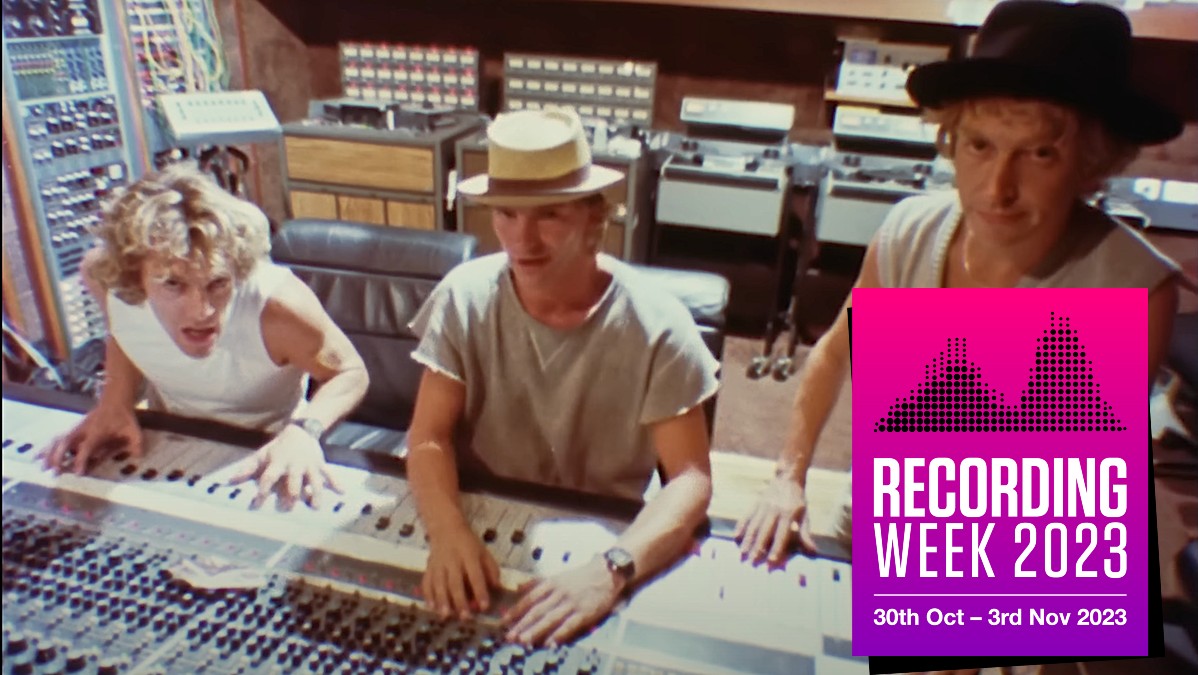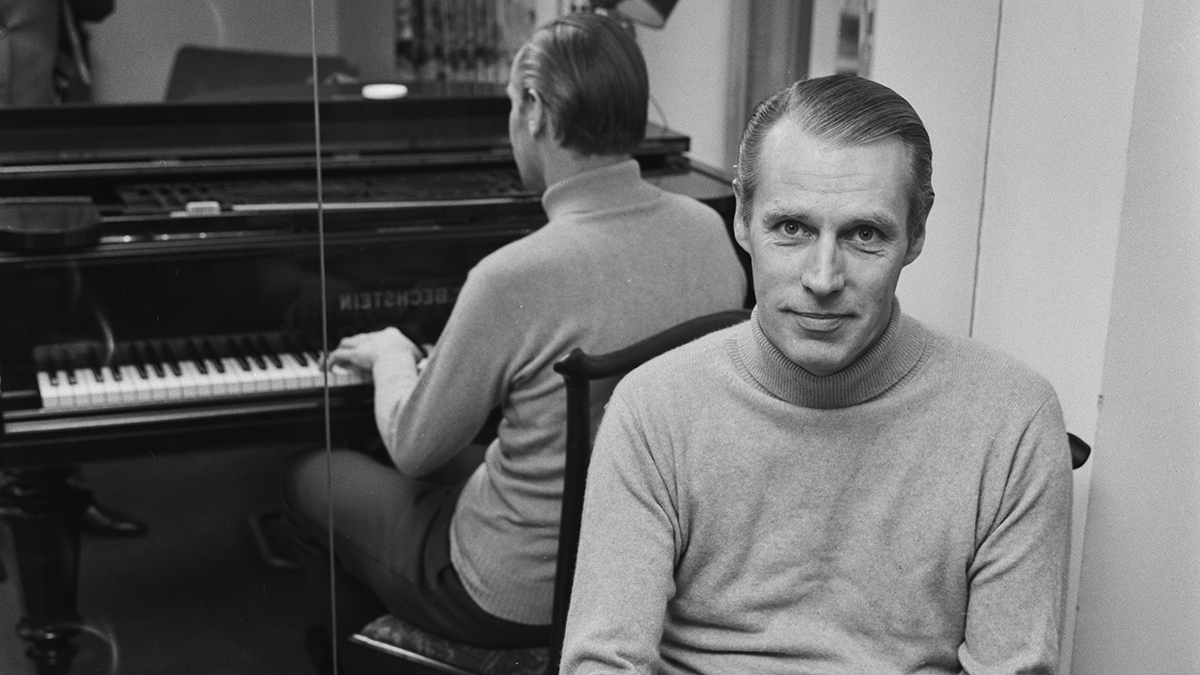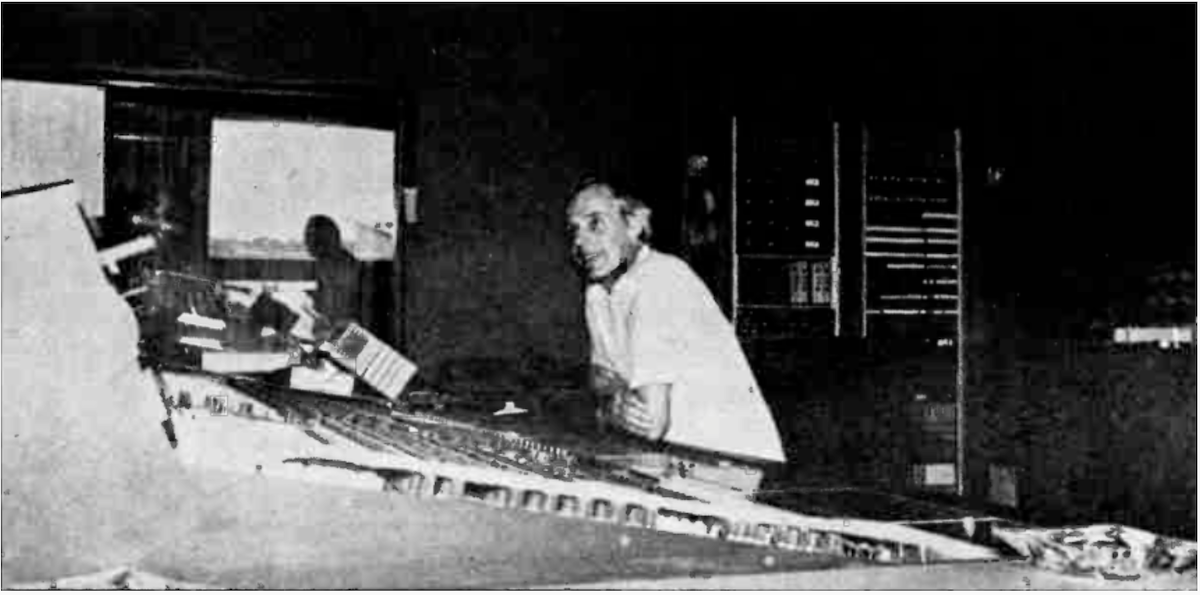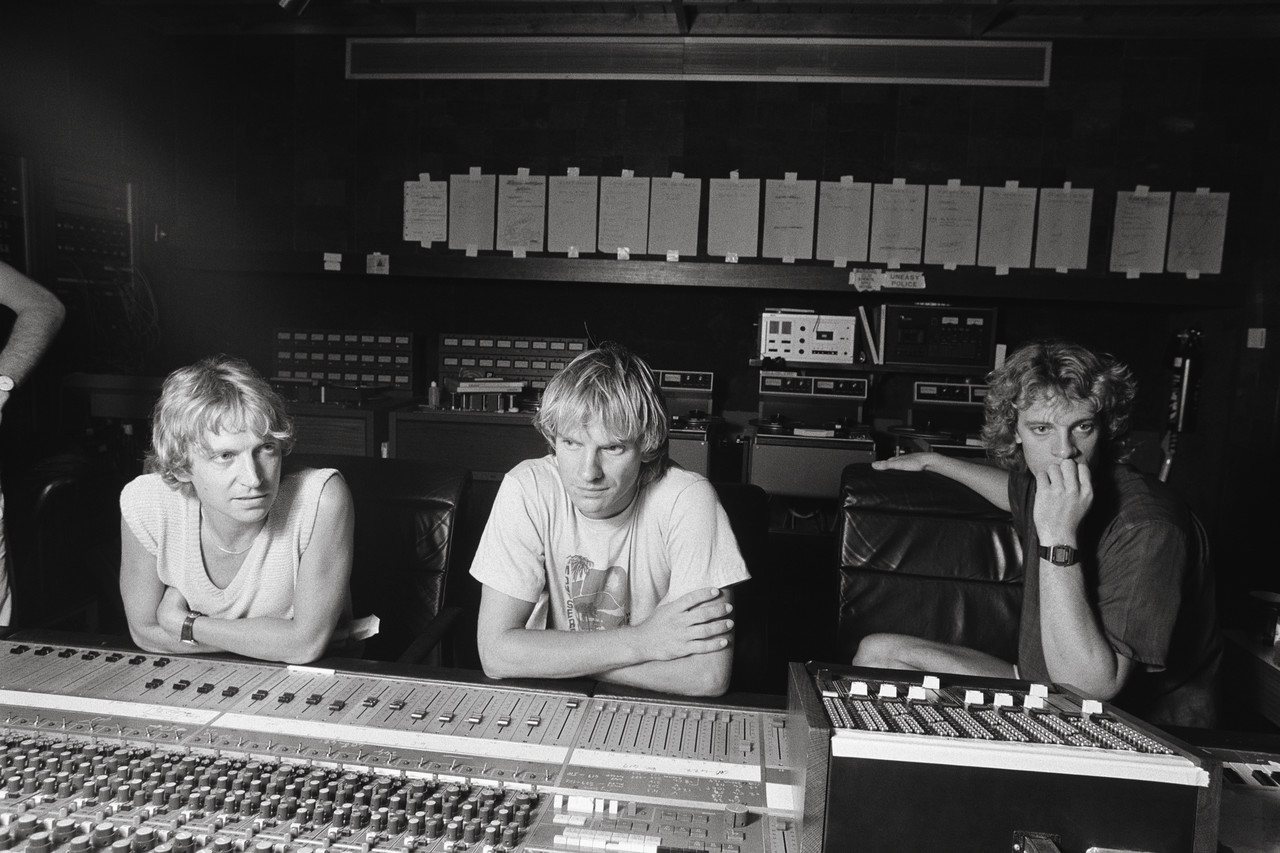
Join us for our traditional look back at the news and features that floated your boat this year.
Best of 2023: In 1979, buoyed by the success of his AIR Studios in London, George Martin decided to open another studio on the island of Montserrat. It would stay open for a decade before disaster struck.
Now the building lies abandoned and empty, a far cry from the days when the biggest bands in the world would drop by and make huge hit records. Here's the story of a decade in recording when pop royalty decamped to paradise.
AIR London had been so busy and so successful that I couldn’t get into it
George Martin
After the Beatles split up, George Martin decided to turn his back on Abbey Road studios – which they and he had become so synonymous with – to open a new facility in London. AIR Studios was set up to record artists on Martin's label Associated Independent Recordings (AIR), which he and fellow producers Ron Richards, John Burgess and Peter Sullivan had set up in 1965. The idea was that this team of super producers would finance recordings as opposed to the record companies, in exchange for more of the royalties earned.
The four-studio complex featured custom Neve desks and state-of-the-art 24-track recording and with Martin on hand, it soon became the fashionable studio to record at. Artists including Pink Floyd, Queen, Roxy Music, Paul McCartney, the Sex Pistols and Kate Bush all recorded their biggest and best works at the studio. But Martin became a victim of its success…
“I was at a point where AIR London had been going for a while and has been so busy and so successful that I couldn’t get into it. And more and more of my work was being done abroad,” Martin told Mix magazine in 1980. He decided that he wanted to do something different with his next studio venture…

From boat to Montserrat
Incredibly, Martin's initial idea was to set a recording studio up on a boat to give artists more privacy and also allow him to record anywhere in the world. He even came close to buying a boat (a 160-footer according to Mix) but the impracticalities eventually ruled that idea out, one being the impact made by the noise of the diesel engines on any potential recordings!
I loved it so much that I bought a place, simple as that
George Martin
Instead, Martin started thinking about more remote locations for a studio – an island would be just perfect, the idea being that he could build a space where bands could record without interruption. And why not make it a Caribbean island to make it that much more attractive for potential clients?
While on holiday on the island of Montserrat in the eastern Caribbean, Martin made what you might call a spur-of-the-moment decision.
"I went there for a few days and fell in love with the place," he said. "I loved it so much that I bought a place, simple as that. It was the first place I’d come to which seemed to be together as a people. The people are warm and friendly.”
Martin bought a large house, Olveston House, and AIR Studios Montserrat would soon we added to his studio portfolio.
The Gear

Martin drafted in some of his old studio contacts, including Geoff Emerick, to help build the facility. AIR Studios in London was partly successful thanks to its use of state-of the-art equipment and Martin wanted the Montserrat version to be kitted out just as well.
When most people think of an island paradise studio they think that the artist will spend very little time in the studio. But the reverse is true
George Martin
They installed a custom-built Neve A4792 console that had to be rolled into the facility on oil drums. (The desk is now thought to reside at A & M studios in Hollywood.) Other gear included a couple of MCI 24-track tape recorders; JBL, Tannoy, Altec and Auratone monitors; two EMT reverbs; UREI EQs and compressors; and more than 50 microphones from AKG, Sennheiser, Neumann and more.
The studio was based on a 30-acre site and consisted of the main recording studio studio, an adjacent villa and a 50-foot swimming pool. There was also accommodation for the musicians and staff at the studio, and a games room completed the setup with darts and a pool table.
“A lot of the big record companies don’t like studios like this because they feel it’s an enticement to spend more money," Martin told Mix about his early days at the studio.
"That’s not true. I’ve found that groups work faster here than in a city studio. It seems like a paradox. When most people think of an island paradise studio they think that the artist will spend most of his time on the beach and very little time in the studio. But the reverse is true."
Martin would be proved right, as a constant stream of big-hitter bands would get some of their best work recorded at the studio over the following decade.
The Bands who recorded at AIR Studios Montserrat

US singer-songwriter Jimmy Buffett was among the first of the musicians to enjoy the AIR Montserrat studio, and he recorded his 1979 US top 20 album Volcano there, named after the Soufrière Hills volcano on the island. Here he plays the title track live at a 1997 concert to raise funds for the island after said volcano errupted.
Riding on the success of Baker Street, Gerry Rafferty was also an early visitor, recording some of his fourth album, 1980's Snakes and Ladders, on the island.
Earth, Wind & Fire recorded some of their 1980 album Faces at AIR Montserrat, while Sheena Easton recorded her best-selling album Take My Time in 1981, featuring her most memorable track, 9 to 5.
As big a hit as that was, probably the biggest charting song recorded at AIR would soon follow. George Martin teamed up with Paul McCartney for his third solo album, Tug of War, which was recorded on the island at the end of 1980 and start of 1981. Martin and McCartney ended the first session after John Lennon was shot dead in December, regrouping the following February.
The somewhat happier result was Ebony & Ivory which McCartney and Stevie Wonder recorded on the island in just a couple of days. The song, of course, would be a huge hit around the world and is arguably the biggest track to have been recorded at AIR. The Police and Dire Straits might disagree with that, mind…
The Police would end up recording two albums at AIR Montserrat, 1981's Ghost in the Machine and 1983's album Synchronicity, although they would be very different recording experiences.
It looked like we'd died and gone to heaven. Montserrat allowed us to calm down
Sting
Of the first album's recording, Andy Summers says in the Under The Volcano documentary, "this was the rock star dream, a fantastic state-of-the-art studio in the Caribbean – this was it, it was like The Beatles, reaching a pinnacle going to those sorts of studios."
Sting adds: "It looked like we'd died and gone to heaven. Montserrat allowed us to calm down. I would run up the hill every morning, jump in the pool and write lyrics. And I learned to windsurf there.”
It would be a fruitful session, then, and even the staff at the studio would join in on backing vocals for some of the tracks. You could say that every little thing they did at at the studio was magic. OK, here's the iconic video.
The next time the band visited the island, though, their careers had skyrocketed but relations within the group had deteriorated. Andy Summers said, “when we got back to Montserrat we were so isolated from each other that it got really difficult to imagine being in the studio and making a record. It got sort of icy.“
The sessions were difficult to say the least – we go into the detail of the recording of the track Every Breath You Take here – but the end result was arguably the band's best work.
It would prove to be the band's final recording, although the island would have one last surprise for Sting. After the recording sessions for Synchronicity were over, he decided to stay on the island for an extended vacation, only to bump into the next band who'd booked the studio, Dire Straits. The band's Mark Knopfler had written a track called Money For Nothing and he needed a backing vocalist.
“I said to someone, 'I wish Sting was here', and they said 'he is, he’s here on holiday!'"
Mark Knopfler
“I said to someone, 'I wish Sting was here'," he told Under The Volcano, "and they said 'he is, he’s here on holiday!'" It would prove to be another fruitful recording session at AIR for the track and the final album, Brothers in Arms, became one of the biggest recordings in history with more than 30 million copies sold.
The demise of the studio
Between 1979 and 1989 many other bands recorded at AIR Montserrat with a total of 70 albums listed as having tracks recorded on the island. Other very positive sessions included those for Elton John's Jump Up! album, including Blue Eyes (although the video was shot in Australia).
Other bands would find the surrounding a little distracting. OMD ran into trouble recording their 1984 album, Junk Culture, at the studio. The band's lead singer Andy McCluskey told Classic Pop, "the difficult thing was that there was a window in the studio, and you could see everybody – the wives, girlfriends, manager, drummer and keyboard player – sitting around drinking Pina Coladas at the swimming pool. And we were freezing our arses off in the air conditioned studio!"
They did get a couple of decent tracks recorded though, including Talking Loud and Clear and Tesla Girls.
Duran Duran's Seven and the Ragged Tiger was also recorded on the island, partly so the band could get away from the fame that they were enjoying on home soil. Nick Rhodes described the experience as "like going underwater – it was silence" in Under The Volcano, and the resulting album would be one of their best.
The first band to record at AIR Montserrat was the Climax Blues Band with their Real to Reel album. Ten years on, the final album to be recorded there was one of the biggest, the Rolling Stones' Steel Wheels. The recording sessions are said to have been so positive that they helped bring the band back together after an extended break from one another.
Soon after the recording of this album, though, Hurricane Hugo hit the island in September 1989.
"It wiped us out and wiped most the island out," Martin said. "There were only 12,000 people living on the island and 11,000 of those lost their homes. It was devastating."
It wiped us out and wiped most the island out
George Martin
Martin managed to get to the island six weeks after the hurricane hit but discovered much of the roof missing from the studio and mould already setting in on the gear. He realised that was the end of the studio, especially as the music business was starting to tighten its belts.
Martin said: "The moguls running the business no longer wanted their artists miles away, outside their control. That happened to coincide with the immense devastation caused by the hurricane and sadly the studios had to close."
The glory days of bands being sent to remote islands to record was coming to an end and the hurricane was the first act from god to sound the alarm. The second was the island's volcano. Thought to be dormant, it erupted in 1995 and again in 1997, covering the island in dust.
While much of the island has since recovered, the studio still lies abandoned and is too dangerous to visit. You can, though, stay in Olveston House which is now a guest house.
If you want to get depressed, you can see what the studios looked like in 2016 with the video above and there are some more recent photos in a Daily Mail article here.
Who owns the facility now is unclear, but one thing is certain and that is that there will never be another studio quite like it, nor such a creative place and time in the world of recording.
But it's like everything in life. Everything has a period. You bring something out of nothing and it always goes back to nothing again.
George Martin
Martin says at the end of the excellent Under The Volcano documentary, while visiting the ruined AIR Montserrat, "it's like seeing something you created fall into disrepair. But it's like everything in life. Everything has a period. You bring something out of nothing and it always goes back to nothing again."







